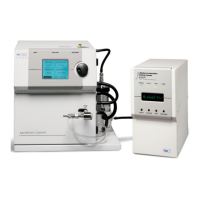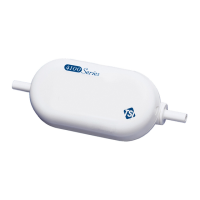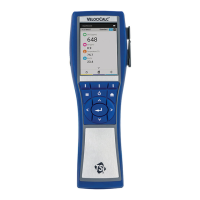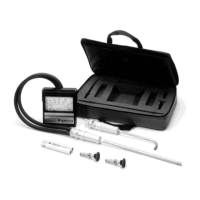Theory of Operation B–5
The charged aerosol passes from the neutralizer into the main
portion of the Differential Mobility Analyzer (DMA), shown in
Figure B-3 and Figure B-4. The DMA contains two concentric metal
cylinders. The polydisperse aerosol (q
a
) and sheath air (q
sh
) are
introduced at the top of the Classifier and flow down the annular
space between the cylinders. The aerosol surrounds the inner core
of sheath air, and both flows pass down the annulus with no
mixing of the two laminar streams. The inner cylinder, the collector
rod, is maintained at a controlled negative voltage, while the outer
cylinder is electrically grounded. This creates an electric field
between the two cylinders.
The electric field causes positively charged particles to be attracted
through the sheath air to the negatively charged collector rod. Particles
are precipitated along the length of the collector rod (see Figure B-3
and Figure B-4). The location of the precipitating particles depends on
the particle electrical mobility (Z
p
), the Classifier flow rates, and the
Classifier geometry. Particles with a high electrical mobility are
precipitated along the upper portion of the rod; particles with a low
electrical mobility are collected on the lower portion of the rod.
Particles within a narrow range of electrical mobility exit with the
monodisperse air flow (q
m
) through a small slit located at the bottom
of the collector rod. These particles are transferred to a particle
sensor to determine the particle concentration. The remaining
particles are removed from the Classifier via the excess air flow (q
e
).
(continued on next page)
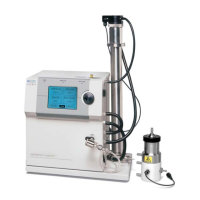
